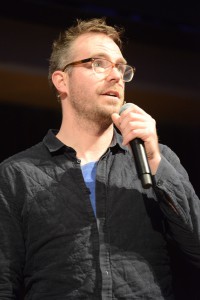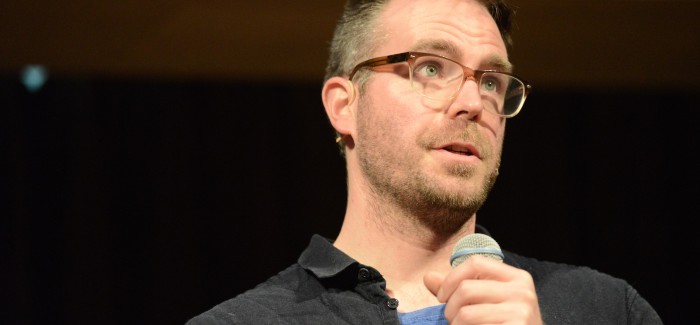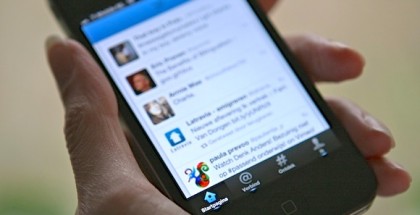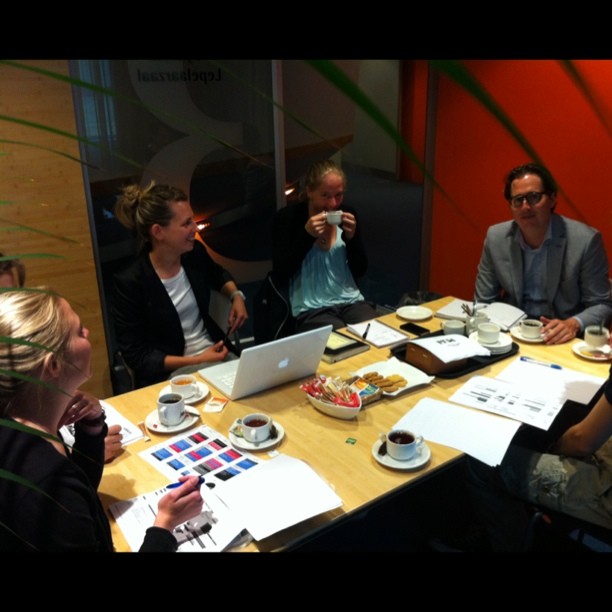Narratives of a storyteller – Floris Kaayk
 Inspiration Speech Floris Kaayk – Narratives of a storyteller
Inspiration Speech Floris Kaayk – Narratives of a storyteller
The last speaker of Media Future Week 2016 is visual artist and director Floris Kaayk. Floris presents two extraordinary transmedial narratives about fascinating, but somewhat controversial themes, both of which had a widely spread impact. An inspiration to everyone who sees her/himself as a storyteller!
Human BirdWings
The work of Floris focuses on futuristic visions, fantasies and concepts. In 2011 he started the project Human Birdwings. The project revolved around the ancient dream of humans to be able to fly. Floris created an alter ego, Jarno Smeets, who does everything possible to make his dream come true. He constructs wings to be able to fly like a bird. Jarno supposedly worked at Philips, Floris thereby gave him a credible background, and from August 2011, Jarno regularly shares videos online about his adventure to create self-built wings.
The blog Jarno kept about his quest for Human BirdWings met the Do-It-Yourself imagery; a bit amateurish, photos/videos shot by himself, combined with believable drawings and interviews with experts. The core story took place on YouTube; supported by Jarno’s social media like his Linked-In profile, Facebook page, Twitter account and blog, humanbirdwings.net.
An essential part of the narrative is Jarno asking his followers for help. To make it as realistic as possible, from that moment onwards, (fictional) friends appear in Jarno’s vlogs and the movies become more professional. Instantly the project received a lot of media attention. The Belgian magazine ‘HUMO’ conducted the first interview with Jarno Smeets, which was an uncomfortable situation for Floris since he was deliberately deceiving the journalist.
After the article in HUMO, several media published articles on the Human BirdWings Project (among others Wired, TechCrunch, Financial Times). When Jarno posts a video of his first (failed) test flight people starts questioning its authenticity and the hunt for the truth starts. The test flight was created with the help of computer animation and attentive and knowledgeable viewers could tell it was fictional. In addition, one of Jarno’s followers discovers that Jarno’s profile picture has been photo shopped. “This is the end,” Floris thought, and he decided to ‘disappear’ for a while. Jarno Smeets was soon forgotten.
That is until March 2012 when Jarno uploaded a video of his first successful test flight. Within 24 hours, the video was viewed more than a million times and there was media frenzy. As Jarno was not available for comment or to make the video available, the YouTube video was ripped and shared on numerous international news sites. Floris finally revealed on the Dutch TV show ‘DWDD’ that the project was fictional, created for the purpose of being able to tell a story through a blog and share it with a large audience.
The media was eager to capture the story of Floris. Some people were hugely disappointed, but overall there was admiration for the way Floris had brought his dream to a large audience. That was precisely the aim of Floris, to reach a wide audience through digital media and hold their attention for a longer period of time. It helped enormously that the story seemed real. Additionally, through Human BirdWings, Floris demonstrated that the media’s hunger for sensation and sharing the video was bigger than their interest to do a thorough analysis of the video and the project. However, this was not true of all media, online media such as Reddit, Gizmodo and Engadget were according to Floris more critical than the larger media players, who uncritically published the story. In this way the project was successful on multiple levels, including unexpected ones. A lot of people wanted to believe in the dream – “But the dream is still a dream.”
The Modular Body
The latest project of Floris is ‘The Modular Body’ – inspired by 3D printers that can print human organs. Unlike Human BirdWings and Rayfish Footwear, with this project Floris wanted to create a science fiction series, where it should be readily apparent to the audience that it is fiction.
It is an online narrative about a group of scientists who wants to bioengineer a modular life form, The Modular Body. If we can print organs and body parts, why not completely redefine and redesign the human body? Inspired by the Modular Phone that consists of separate parts that can be individually replaced and improved, the scientists design clickable organ modules that make it possible to build a living organism. In a series of videos one can see how the scientists create OSCAR, a prototype consisting of organ modules grown from human cells.
The online story consists of a series of 56 interconnected videos. Every time a video is watched it becomes part of the story path. There are videos explaining the design of OSCAR, in the recognizable Internet video style of ‘how-to-create-things’. But there is also a recorded television talk show where experts discuss OSCAR’s legal status, is it a human being? What does this mean for the relationship between man and machine? The trailer presenting OSCAR soon went viral and has now been viewed over 8.5 million times. It is striking that almost 80% of the viewers, despite Floris stating that it is science fiction, still believe it is reality.
Lessons of a storyteller
The stories of Floris are on the verge of reality. Sometimes dreams, sometimes uncomfortable stories about the future. By making the narrative as realistic as possible, it goes beyond being a thought experiment. Floris uses video formats we are familiar with, therefore making the story even more believable. And Floris does not mind that his audience gets confused about the authenticity of the story; it gets people thinking and stirs up the public debate on the issue. Sharing knowledge and spurring the debate and thereby reaching the widest possible audience, that is the goal.





